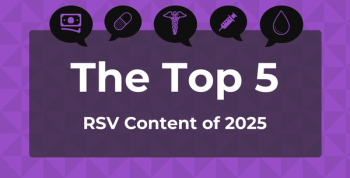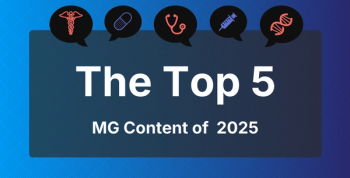
Lead Author of Hospitalist Study Discusses Success of Unique Staffing Models
A study published last October indicated that hospitalist groups with a higher ratio of physician assistants to physicians achieved the same outcomes at lower cost in a community hospital setting. Lead author Timothy Capstack, MD, explained to The American Journal of Managed Care® how these hospitalist models can benefit patients in a variety of healthcare settings.
A study published in the Journal of Clinical Outcomes Management last October indicated that hospitalist groups with a higher ratio of physician assistants (PAs) to physicians achieved the same outcomes at lower cost in a community hospital setting. Lead author Timothy Capstack, MD, explained to The American Journal of Managed Care® how these hospitalist models can benefit patients in a variety of healthcare settings.
Capstack discussed the significance of
The hospitalist team “basically had similar results” in terms of “whether patients were readmitted more often or died more often on our service compared to the one that was staffed mostly with physicians,” Capstack said. Considering these equivalent outcomes, the hospitalist model provides a clear benefit in that the “overall cost of our services is less, because our providers are less expensive.”
According to Capstack, a follow-up study is in the works to determine whether these alternative staffing models have an effect on patient satisfaction. Anecdotally, Capstack has found that patients “are at least equally happy being seen by a PA or nurse practitioner [NP] compared with a physician.” He explained that because each type of provider is trained differently and “brings their own sort of flavor to their patient interactions, some patients really resonate with the perspective and background” brought to the table by PAs and NPs.
The Adfinitas Health training program that provides NPs and PAs with this unique background also prepares them to function at a high level of clinical skill, Capstack said. Besides receiving around 80 hours of classroom education during the 6-month training period, the trainees also “are exposed to greater and greater clinical experience and responsibility where they’re seeing more and more patients… to the point that by the time they get to the end of their 6 months, they are caring for a similar number of patients with similar complexity that our experienced staff would take care of.”
While the trainees come from a variety of backgrounds, many of them are “newer graduates of PA or NP programs who are looking for a strong general basis for their future career,” Capstack said. Overall, “people that are successful in hospital medicine are very smart, they’re very motivated, [and] they have to be willing to work hard and work as a team with their colleagues.”
Despite its name, the hospitalist model is not solely used in hospital settings. It has also been implemented in post-acute care centers, where hospitalists visit recovering patients more frequently than physicians can, allowing them to monitor the patients’ medical progress. The other benefit of using hospitalists in post-acute care is that “that there is a lot more potential for coordination between the hospital staff and the rehab staff trying to coordinate their care,” Capstack explained. “If there’s an issue that arises while they’re at the post-acute care center, there’s the advantage of knowing what happened to them in the hospital so that we might avoid an unnecessary rehospitalization.”
Capstack also discussed the potential for the hospitalist model to expand into other settings like assisted living facilities or transitional care clinics, where follow-up appointments with hospitalists can help keep patients from returning to the hospital. He predicted that the hospitalist model will “absolutely” spread even further throughout healthcare, citing data from the Society of Hospital Medicine that recently found “over 50,000 hospitalists in the United States alone, and [the number] continues to grow.”
Newsletter
Stay ahead of policy, cost, and value—subscribe to AJMC for expert insights at the intersection of clinical care and health economics.







































